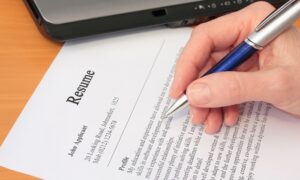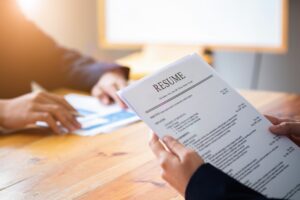A resume is a document used in the hiring process. It includes information about your background, experience, qualifications and it is the best way to communicate with the employer in a simple and easy-to-read format.
The main objective is to rapidly communicate why you are uniquely qualified for the position based on your skills and experience. A resume should be relevant and readable. Let’s see the steps for making a good resume!
1.Choose a resume format
A format is an order in which you can display your information on your resume. Commonly, there are three resume formats, they are chronological, functional, and combination. You can choose any of these formats depending upon which is ideal for you.
A Chronological resume format emphasizes relevant job experience and highlights career advancements. It’s a good option that if you have rich professional experience without any gaps in employment.
The Functional resume format focuses on your skills and abilities. It’s a good option that if you are switching industries or have some gaps in your work history.
The Combination resume format is good if you have a professional experience where both skills and work history are equally important.
2. Add your name and contact information
Your resume should begin with your name and contact information including phone number, Location, Email address, and LinkedIn profile URL. Your name should be visible at the top of your resume with a bolded and larger font than the rest of the document.
3.Write a resume headline
A resume headline is a brief one-line description of who you are as a candidate. This is the first thing a recruiter read, so take this opportunity to make a strong first impression.
4.Add your professional resume summary statement
A resume summary statement is a short paragraph at the beginning of a resume that highlights your professional skills and experience. It should communicate to recruiters and hiring managers why you are a good fit for the job.
5.List your soft skills and hard skills
Take a moment to consider which skill makes you an extraordinary fit for the job. Consider technical and interpersonal skills as well as transferable skills you can use when changing careers and industries.
6.List your professional history with keywords
Write your professional history in reverse chronological order. Starts with your latest job and provide a short description with your company name, time period in which you were employed, job title, and a couple of key achievements during your time at the company.
7.Include education section
An education section is valuable if you have limited experience or if you are transferring to a new industry. When you writing your education details you should include the name of the Institution, date of attendance, and your area of study.
8.Proofread your Resume
Evaluate your resume for spelling, and grammatical errors. Read your resume and focus on each keyword. Finally ask your friend to double check your resume. It will help to reduce errors.
Looking for a job or career advancement? we can help! We are the best recruitment agency in Canada. We connecting employers with employees from diverse backgrounds.



